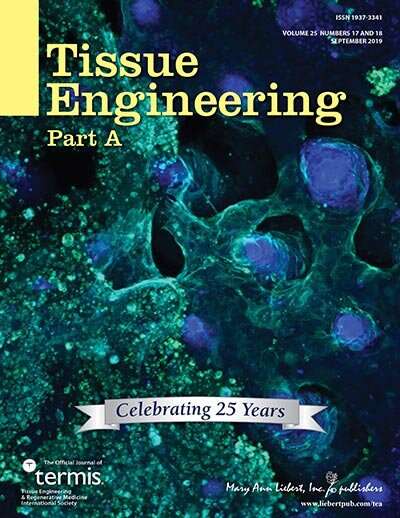Credit: Mary Ann Liebert, Inc., publishers
Damage to the meniscus is common, but there remains an unmet need for improved restorative therapies that can overcome poor healing in the avascular regions. Now, researchers have reported a new method that may help by growing meniscal cells on 3-D electrospun nanofiber scaffolds. Their work is published in Tissue Engineering.
Darryl D. D'Lima, MD, Ph.D., Shiley Center for Orthopaedic Research at Scripps Clinic, La Jolla, CA, with colleagues from Scripps Clinic and Scripps Research Institute, present their work in an article titled "Core-Shell Nanofibrous Scaffolds for Repair of Meniscus Tears". The authors created a core-shell scaffold material by the co-axial electrospinning of a polylactic acid core with a collagen shell, seeded it with meniscal cells, and monitored tissue development based on gene expression and histology. These constructs were used to repair tears in meniscal explants and showed good integration.
"Meniscal injuries in the avascular region can be notoriously difficult to treat," says Tissue Engineering Co-Editor-in-Chief Antonios G. Mikos, Ph.D., Louis Calder Professor at Rice University, Houston, TX. "The ex vivo tissue repair results from this article demonstrate the therapeutic promise of the co-axial electrospinning strategy, potentially altering the treatment paradigm for such injuries."
More information: Jihye Baek et al, Core–Shell Nanofibrous Scaffolds for Repair of Meniscus Tears, Tissue Engineering Part A (2019). DOI: 10.1089/ten.tea.2018.0319
Provided by Mary Ann Liebert, Inc





















